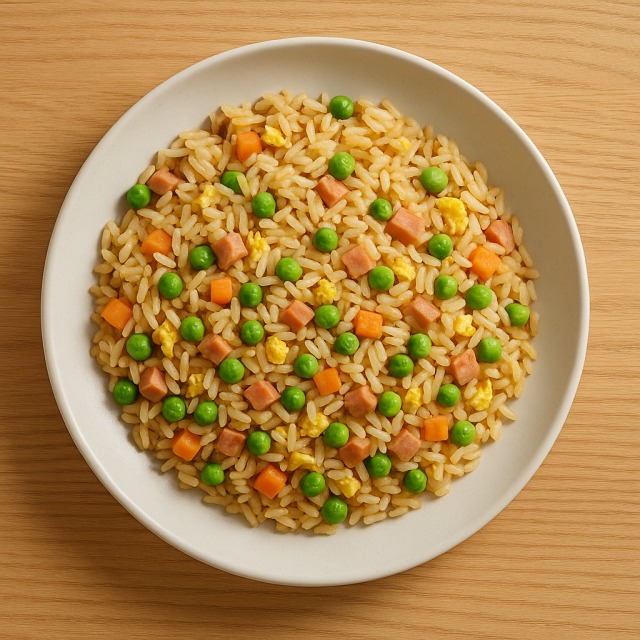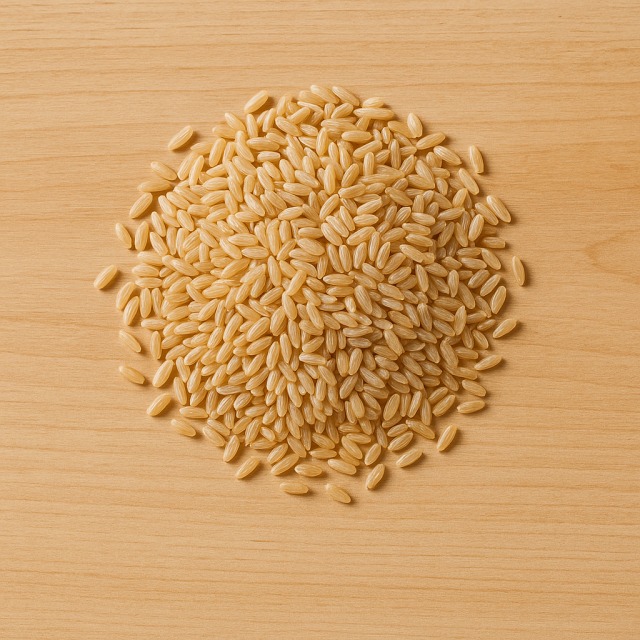Calorie Chart / Trimmings / Rice
How Many Calories Are in Rice?
Calculation of the nutritional value & Recommended Dietary Intake of rice
For g and a calorie requirement of kcal
| Calories 254 kcal | Proteins 4.6 g | Lipids 0.4 g | Carbohydrates 58 g |
| 13% | 6% | 1% | 21% |
Health benefits of rice

Rice - 100g
Calories 127 kcal
Proteins 2.3 g
Lipids 0.2 g
Carbohydrates 29 g
Rice is generally considered a moderate-calorie staple: 127 calories per 100 g cooked. Thanks to its high proportion of complex carbohydrates, it delivers steady energy without the calorie peaks you sometimes get from refined sugars. Those calories come with valuable micronutrients such as B-group vitamins (thiamine B1, niacin B3, and pyridoxine B6), as well as manganese, magnesium, and a touch of selenium.
Although its proteins are limited, rice contains all nine essential amino acids in small amounts and almost no fat, so the ratio between calories and lipids remains very favorable for cardiovascular health. Naturally gluten-free, it is well tolerated by people with celiac disease, and its low sodium content helps keep calorie-dense salty seasonings in check.
A cup of rice water has been used for centuries in Asia to soothe digestive troubles—an anecdotal but longstanding practice. From the terraces of the Philippines to the paddy fields of Camargue in France, rice has shaped landscapes and cultures while supplying affordable calories to over half of the world's population.
Because 127 calories per 100 g place it between low-calorie vegetables and high-calorie fats, rice is easy to fit into most meal plans, whether the goal is weight loss, maintenance, or fueling athletic performance.
Tips for incorporating rice into a balanced diet
To keep rice calories under control while still feeling satisfied, serve about 60–70 g (raw weight) per person and round out the plate with fibre-rich vegetables. For example, pair a fragrant basmati rice with a grilled chicken breast and steamed broccoli: you obtain plenty of volume yet only modest calories.
Looking for something spicier? A homemade stir-fry combining rice, strips of salmon and crunchy bell pepper delivers proteins and omega-3s without exploding the calorie count. The chili and garlic also boost flavor, meaning you can cut back on calorie-heavy sauces.
If you crave comfort food, try a portion-controlled bowl of beef curry with rice or vegetarian rice pilaf mixed with lentils and diced carrot. The extra plant proteins and fibre slow down carbohydrate absorption and help stabilize calories throughout the afternoon. Whatever the recipe, remember that letting cooked rice cool and then reheating it slightly increases resistant starch, which may reduce the share of digestible calories.
For athletes who need more calories, simply increase the rice portion or switch to the whole-grain variety. Conversely, dieters can replace a third of the rice with cauliflower florets to shave off calories while keeping plate volume high.
Frequently Asked Questions
- How many calories in rice?
- Rice provides 127 kcal per 100 g cooked.
- Does rinsing rice change its calories?
- No. Rinsing removes excess starch from the surface but does not significantly alter the total calories present in the grain.
- What portion of rice should I cook if I want to reduce calories?
- About 50 g raw (≈ 150 g cooked) supplies roughly 190 calories and is usually enough when accompanied by lean protein and vegetables.
- Are brown rice calories different from white rice?
- Brown rice delivers about the same calories per 100 g but offers more fibre and micronutrients, helping you feel full on those calories for longer.
- What cooking method keeps rice calories lowest?
- Simple absorption or steaming adds no fat, so calories stay close to the intrinsic 127 kcal/100 g. Fried rice or creamy risottos can double the calories.
- Can I freeze cooked rice without increasing calories?
- Yes. Freezing and reheating do not add calories; in fact, the formation of resistant starch can make a small fraction of calories less digestible.
Similar foods
Information provided by Calorie Menu may contain inaccuracies or errors. It cannot, under any circumstances, substitute medical advice or medication.










